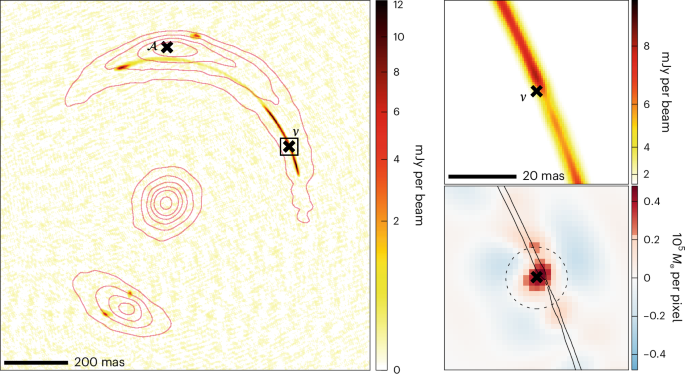Los Angeles firefighters did not use thermal imaging technology to detect lingering embers underground after a New Year’s Day fire in Pacific Palisades that flared up days later to become one of the most destructive infernos in the city’s history.
Interim Fire Chief Ronnie Villanueva said in an interview Wednesday that fire officials decided against employing the technology, which would have pinpointed heat underground, because of the fire’s 8-acre size.
In the 36-plus hours that crews spent mopping up the Jan. 1 fire, which federal prosecutors say was deliberately started along a popular hiking trail, firefighters “cold-trailed” the perimeter, chopping a line around the fire and feeling for residual heat. They packed up and left on Jan. 2, then returned the next day, after a report of smoke in the area, for another round of cold-trailing, Villanueva said.
Villanueva downplayed the effectiveness of the thermal imaging cameras, noting that some chaparral in the city extends 15 to 25 feet underground, while the depth of the department’s cameras is only a foot.
“We did everything that we could do,” he said.
Los Angeles Fire Department officials, already under scrutiny for their failure to pre-deploy engines in advance of the Palisades fire, are facing questions about why they didn’t fully extinguish the Jan. 1 fire before hurricane-force winds fanned an ember buried within the roots of dense vegetation on Jan. 7. The Palisades fire killed 12 people, charred 23,400 acres and leveled more than 6,800 structures, including many homes.
On Wednesday, federal prosecutors released documents charging a 29-year-old Uber driver with intentionally setting the Jan. 1 fire, called the Lachman fire. The documents also revealed the results of a federal investigation into the cause of the Palisades fire, which concluded that it was a “holdover” fire — defined as a fire that remains dormant for a considerable time.
An LAFD after-action report also released Wednesday described shortcomings of the department’s response to the Palisades fire, along with recommendations for improvement, but did not address the failure to prevent the holdover from the Lachman fire.
Fire agencies across the country, including the LAFD, often deploy drones or aircraft with thermal imaging to detect lingering heat or hot spots in a fire.
Ed Nordskog, a former arson investigator with the Los Angeles County Sheriff’s Department, was critical of the agency’s decision not to deploy the thermal imaging, calling it “hard to justify.”
“It is not extraordinarily difficult to do,” Nordskog said of deploying the technology. “It is specifically used to prevent rekindle fires. It is normal protocol to do it and then send back a couple of firefighters to check again.”
He added: “If they have those items and failed to employ them, that would be a major error.”
Fire experts said that in some environments, a blaze can rekindle days and even months after the initial fire is thought to be extinguished. Embers can bury deep in tree roots and chaparral, become covered in heavy ash and continue to smolder until strong winds set them free. Nordskog said that thermal imaging is the safest way to spot such embers.
It’s typical for rekindling to happen when firefighters are still on the scene, allowing them to get control of the situation quickly. But some destructive fires, including the 1991 Oakland Hills fire and the 2023 Maui fire, have been restarts of older fires.
It is unclear whether the LAFD had a specific policy on when to deploy thermal imaging technology before the Palisades fire. The agency has declined to disclose such records to The Times.
A source with knowledge of the evidence, who spoke on condition of anonymity, said investigators working on the federal investigation obtained proof that smoke was coming out of the ground at the Lachman fire site between Jan. 1 and Jan. 7.
In March, the LAFD issued a policy memo outlining fire containment and mop-up procedures to “ensure complete extinguishment of vegetation, wildland and brush fires.”
The bulletin states that unmanned aerial system drones “should be considered for deployment” on all fires greater than an acre to assist with infrared heat detection and fire perimeter surveys.
Fires that are smaller than 5 acres, the policy states, should include a line cut by hand or with a bulldozer around the entire perimeter, and 100% mop-up where crews extinguish remaining hot spots and smoldering material within the fire’s control lines using water and foam. Larger fires are required to have “wet mop-up extending a minimum of 100 feet from the fire perimeter,” according to the document.
This year, the department started working with Nova, which develops drone and aerial software that uses infrared data to build a map so crews can find hot spots within about 10 feet of accuracy.
The technology is helpful for identifying areas of a wildfire, even underground, that are still smoldering, said Daan Arscott, the company’s director of business development.
“As long as there’s some way for that heat to be venting, which if it’s underground, there has to be some sort of oxygen source for the fire to keep smoldering, we’re able to pick up on that hot spot,” he said.
Experts said the LAFD’s decision not to deploy thermal imaging drones during the mop-up was one of several critical missteps in the days ahead of the Palisades fire.
A Times investigation found that LAFD officials did not pre-deploy any engines to the Palisades before the flames erupted, despite warnings about extreme weather. The officials also did not require firefighters to stay for an additional shift.
In preparing for the winds, officials chose to staff up only five of more than 40 engines available to supplement the regular firefighting force. According to the after-action report, the firefighters who voluntarily returned could staff only three engines.
The additional engines could have been pre-positioned in the Palisades and elsewhere, as had been done in the past during similar weather.
Villanueva and Mayor Karen Bass on Wednesday announced changes to deployment protocols on extreme weather days, including ordering firefighters to remain on duty for an additional shift during red flag weather warnings. They also said they have implemented leadership changes and a stronger pre-deployment model.
Kenny Cooper, special agent in charge of the U.S. Bureau of Alcohol, Tobacco, Firearms and Explosives, who was involved in the months-long investigation into the fire’s cause, downplayed firefighters’ role in failing to prevent the rekindling, saying that the blaze burned deep within the ground and remained active for days.
“The person who started this fire is solely to blame,” he said. “I will never blame our brave firefighters when we know how this fire started.”
But Rick Crawford, a former LAFD battalion chief, said the department should have deployed thermal imaging drones while mopping up the Lachman fire or in the days leading up to the high winds, to ensure the ground was completely cold and the fire couldn’t rekindle.
Crawford added that the technology, which he called a “game-changer,” should be used on every wildfire to ensure that all embers are extinguished.
The lack of proper staffing during the high winds also created a chaotic situation after the Palisades fire erupted, he said.
“LAFD had many opportunities to take on this fire. One is mop it up properly to ensure that it’s out in between Jan. 1 and Jan. 7 by having someone look at it and possibly put patrols on duty to ensure the fire was 100% out, because the repercussions were going to be immense,” he said.
“None of that was done in this situation,” he added. “And obviously this is the result that we have with the Palisades.”
Source link


